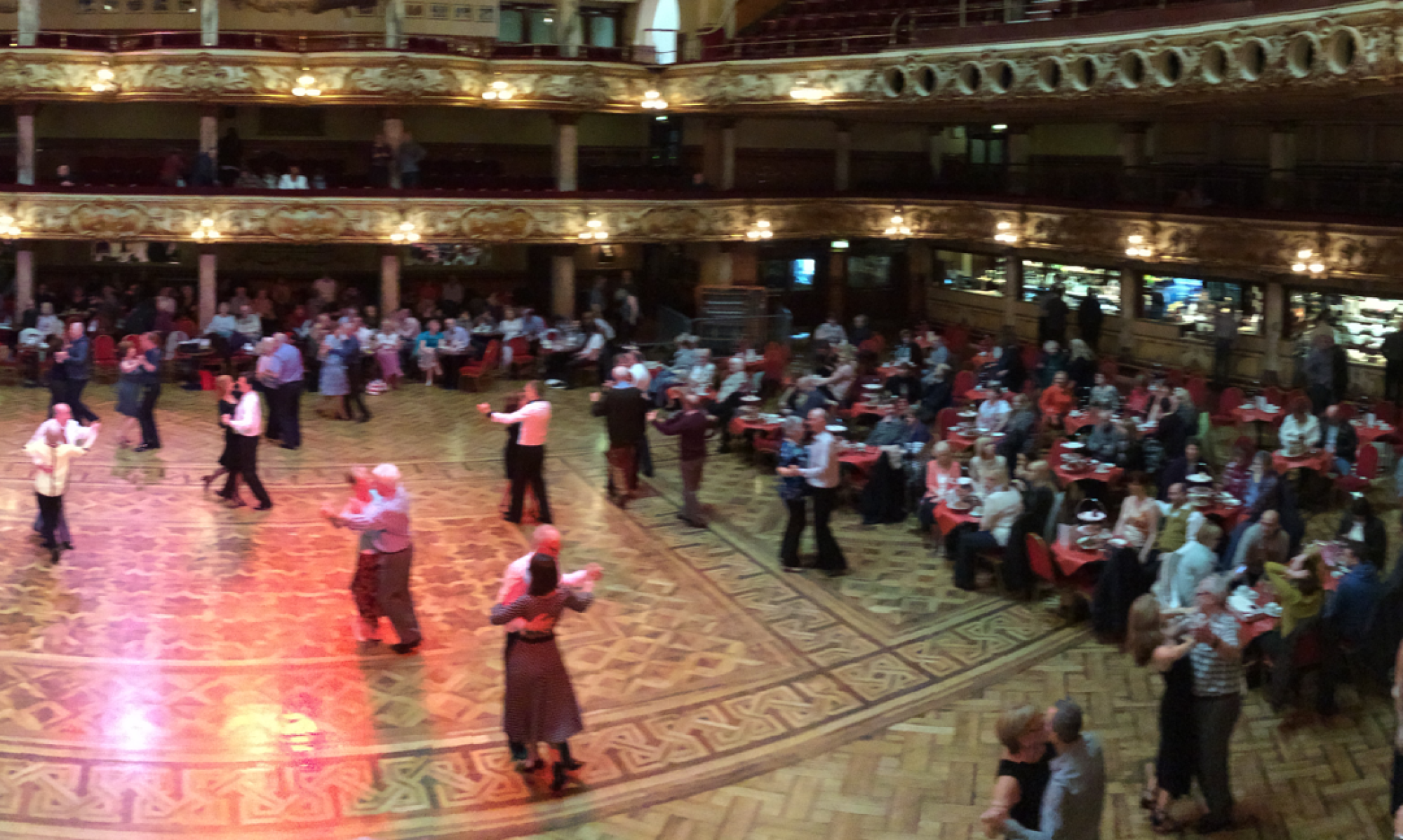Now that you’re a pivot turn pro (or at least on the way), we can look at the more challenging chaine turn. Used in jazz and ballet, as well as ballroom, chaine turn give speed and snap to your turns, and are often found in faster rhythm/Latin dances like cha cha or salsa.
What is a chaine turn?
A chaine turn is a short, usually rapid turn danced in a straight line, making a half turn per step. Visually, this consists of a slower traveling action followed by a (usually) much faster turning action. Chaines usually involve a series or ‘chain’ of turns (‘chaine’ is French for ‘chain’), but ballroom chaines can be singles as well.
Also unlike traditional chaines, which are often taught with legs hip-width apart, most ballroom chaines close the feet during the ‘meat’ of the turn. Chaine turns can be executed by traveling either forward or to the left or right.
How do I master it?
With great patience! Unlike the pivot, where momentum is generated from the hips alone, ballroom chaines use a whole side of the body
– legs, hips, ribcage and shoulders – to snap the body around. This demands better body coordination then the pivot, where the body stays locked in place after the initial push.
To begin, one side of the body must always be leading – that is, further forward down the direction you wish to travel. Think like a fencer turning sideways towards his opponent.
As you transfer your weight forward, make sure you begin the turn from your centre (think upper abdominal muscles), followed immediately by catching up or closing your back shoulder, hip and leg to bring the turn around, do it slowly for now – technique is more important then speed at this stage. Make a half turn on each foot, finishing in your original direction.
One of the hardest parts of the chaine turn is staying vertical at the end of it. If you tend to fall out of the turn, practicing 1/4 turn chaines, and gradually increasing to a full rotation helps strengthen the stabilizer muscles needed to keep you upright.
Putting it together: The bachata inside turn
Yes, I know the lady in the video isn’t always closing her feet on the turn – otherwise her technique is decent. Though more nightclub then ballroom, bachata is great for practicing a slow chaine turn. Watch the video above and/or follow the instructions below to practice:
Begin with feet together. Step side with your RF, rotating your foot, hip and shoulder on that side in the direction of travel.
As your weight transfers to the ball of your RF, catch up with the left side to make a complete turn to the right, closing and changing weight with your LF halfway through the turn.
Tip: Keep the weight on the balls of the feet when changing to your LF, or you’ll bring your turn to a screeching halt.
Making sure you are balanced, step side with your RF. Try the turn in the opposite direction.
We’ve looked some of the trickier turns for rhythm/Latin, but what about smooth/standard? Next page, we’ll wrap up our turning series with two of the most common turns in ballroom – the reverse and natural turn!
